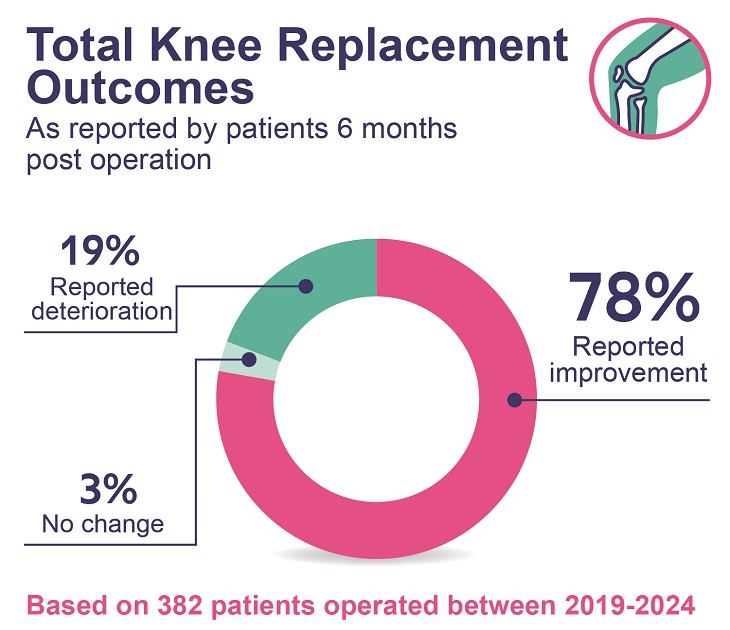knee replacement Outcomes, PROM's
Joint replacement surgeries have become increasingly common over the past generation, with more than 6,000 procedures being performed each year in Israel. The goals of knee replacement surgery are to stop or alleviate pain resulting from wear and tear in the cartilage of the knee joint, and to improve flexibility, mobility, and quality of life.
The knee joint consists of four bones - the thigh, calf, tibia, and patella, and is connected by muscles, ligaments, and tendons. Its role is to facilitate movement while supporting the body’s weight. Resembling two wheels on a flat surface, its inherent instability makes it susceptible to injuries in the soft tissues. The cartilage, which coats the bones of the knee joint, is one of its most important components. Its role is to absorb shocks and ensure smooth movement of the joint. When the cartilage is damaged or worn, the bones rub against each other during movement, resulting in knee pain and restricted movement and mobility.
As part of the project, we gathered data from more than 200 patients who underwent elective knee replacement surgery at Sheba. The participants were asked to fill out a questionnaire (KOOS-PS) assessing their level of functioning prior to the surgery, as well as at three months, six months, and one year post-surgery.
The outcomes were based on data collected between 2015 and 2023. Looking at the graph, we can see that among patients who described their health condition as moderate to severe before surgery, 80% reported a significant clinical improvement about six months after surgery, 17% noted a decline in their baseline condition, and 3% reported no significant change in their condition.

.









